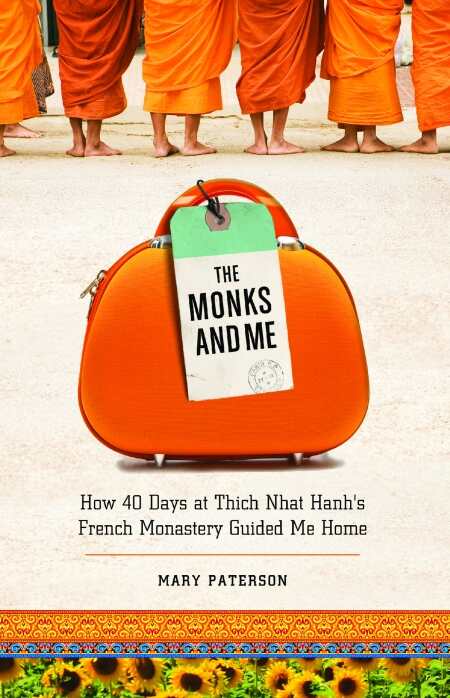The Monks and Me
How 40 Days in Thich Nhat Hanh's Monastery Guided Me Home
“Death can be a destabilizing force,” Mary Paterson writes. “And when it touches you closely, you must somehow discover a way to find and rebuild your secure home.” When Paterson’s mother dies, she turns to yoga and meditation for comfort. Though ultimately becoming a founder and director of her own yoga center in Toronto, it is not until her father also passes away that she embarks on a forty-day pilgrimage to Plum Village, a Buddhist monastery in France, in an effort to “take refuge within the wise self” and find lasting stability.
Paterson’s memoir of this experience is comprised of forty chapters, one for every day at Plum Village. Each begins with a quote and combines her experiences there with her reflections on the teachings of Thich Nhat Hanh, the much-lauded monk who leads the monastery. With each day in France, Paterson discovers the advantages of a life lived deeply in the moment and recognizes how not doing so has hurt her in the past. “I once left a deeply loving relationship with a close to perfect man,” she reflects. “At the time I thought I had moved on to seek higher ideals, but I see now it was simply out of boredom.” At Plum Village, Paterson learns to live more richly, with patience and humility.
Some of Paterson’s deepest insights and most interesting observations relate to the various people she meets at Plum Village. Despite its quiet setting, the monastery attracts an array of characters, including a reformed cat killer, a headphone-stealing fellow retreater, an orphaned violinist, and an arrogant almost-PhD. In parallel with her practice of mindfulness at Plum Village, no event or person is too small for Paterson to examine in her quest for true peace.
In one such scene, not long after Paterson first arrives at the monastery, she is taking a shower in the tiny washroom, only to be left covered in soap when the tap suddenly cuts out. In a Zen-like moment of understanding, Paterson accepts her circumstances, thinking, “Whether or not the water comes back on has nothing to do with me, so why fight it with stiffness and inflexibility?” As if sensing her acquiescence, the water soon returns. “Things have a way of turning out, when we relax,” Paterson concludes.
Paterson’s book is filled with quiet wisdom and a cast of interesting characters. Those looking for a firsthand account of Buddhist or Eastern practices who also exhibit a tolerance for new-age philosophy will not be disappointed.
Reviewed by
Lia Skalkos
Disclosure: This article is not an endorsement, but a review. The publisher of this book provided free copies of the book to have their book reviewed by a professional reviewer. No fee was paid by the publisher for this review. Foreword Reviews only recommends books that we love. Foreword Magazine, Inc. is disclosing this in accordance with the Federal Trade Commission’s 16 CFR, Part 255.

